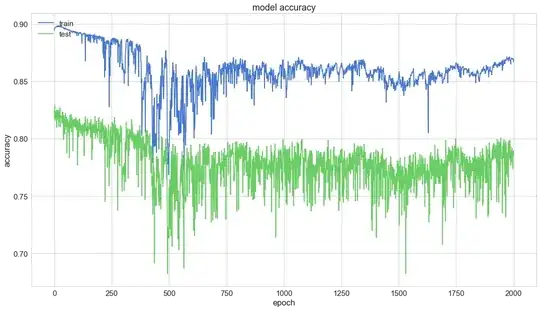The main object of my question is this: if $X$ has a log-normal distribution, $Y = X + Z$ and $Y$ has the same distribution as that of $Z^2$ (in other words, $F_{Z^2} = F_{X+Z}$) and $X, Z$ are independent, then what is the distribution of $Z$? See below a potential example with $X$ being log-normal, and $\log \log Z$ being almost, maybe exactly normal (its CDF pictured below, based on empirical calculations):
Below are details explaining why I came up with this problem, and why I am interested in it. Let's say that $Y = X + Z$, with $X$ and $Z$ being independent, and $Y$ having the same distribution as $Z^2$. In addition, $X \geq 0$ and $Y, Z \geq 1$. The latter condition is needed for reasons that are due to the nature of my problem, and explained below.
If the distribution of $Z$ is known, how do I find the distribution of $X$? Or conversely? Of course one can use the characteristic functions and the convolution theorem. I am interested here in finding the most simplest distributions for $X$ and $Y$, satisfying all the requirements.
The problem is as follows. We are dealing with
$$Z=\sqrt{X_1+\sqrt{X_2+\sqrt{X_3+\cdots}}},$$
where the $X_k$'s are i.i.d. with same distribution as $X$. I am trying to find $X$ such that $Z$ has a simple distribution. The problem seems easier to solve backward: finding $Z$ such that $X$ has a simple distribution.
I tried a log-normal distribution for $X$, more precisely $X=\exp(T)$ with $T \sim$ Normal$(0,1)$. It is pretty obvious that $Z \geq 1$ with probability one. Based on empirical evidence, $\log \log \beta Z$ is pretty well approximated if $\beta = 1$. Is it possible to compute the actual distribution of $Z$? Is my approximation exact? (Update, not, it's just an approximation, not an exact match) If not I am interested in any combination of $X$ and $Z$ where both distributions are simple ones. This is a follow up to my previous question on CV, see here. (Update: a summary about all this research can be found here.)
